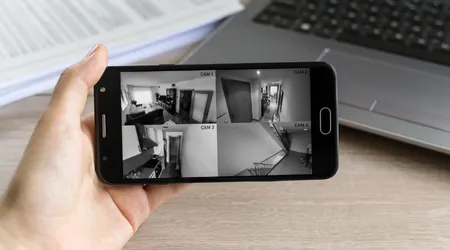Smart Home Privacy: Protecting Your Digital Life

In an era where convenience meets innovation, smart home privacy has become a cornerstone of digital security.
As our homes grow smarter, so do the risks associated with interconnected devices.
From voice-activated assistants to smart thermostats, the modern household is a hub of data collection.
But how much of this data is truly secure?
And what steps can you take to safeguard your digital life?
The allure of a smart home lies in its ability to simplify daily tasks.
However, this convenience often comes at the cost of personal privacy.
According to a 2023 report by Statista, over 57% of U.S. households own at least one smart home device.
While these devices offer unparalleled efficiency, they also create vulnerabilities that hackers can exploit.
This article delves into the challenges of smart home privacy and provides actionable strategies to protect your digital footprint.
The Double-Edged Sword of Smart Home Technology
Smart home devices are designed to make life easier, but they also collect vast amounts of data.
Every command you give to your voice assistant, every adjustment you make to your smart thermostat, and every notification from your security camera is stored somewhere.
This data, while useful for improving user experience, can also be a goldmine for cybercriminals.
Consider this: a single compromised device can serve as a gateway to your entire network.
For instance, a hacker gaining access to your smart fridge could potentially infiltrate your Wi-Fi network, exposing sensitive information like banking details or personal emails.
The interconnected nature of these devices amplifies the risks, making smart home privacy a critical concern.
Moreover, the sheer volume of data collected can lead to unintended consequences.
If not properly managed, this data can be used for targeted advertising or even identity theft.
Understanding the implications of data collection is essential for any smart home user.
+ Smart Lighting Systems: Complete Installation Guide
Understanding the Risks: Where Does Your Data Go?
To address smart home privacy, it’s essential to understand how your data is collected, stored, and shared.
Most smart devices rely on cloud-based services to function.
While this allows for seamless updates and remote access, it also means your data is stored on third-party servers.
A study by the University of Chicago revealed that 72% of smart home devices share data with third parties, often without users’ explicit consent.
This data can include everything from your daily routines to your location history.
The lack of transparency in data-sharing practices underscores the need for stricter regulations and user awareness.
Additionally, many users are unaware of the extent of data collection taking place.
Reading privacy policies can be tedious, but it’s crucial for understanding how your information is used.
Becoming informed can empower consumers to make better choices regarding their smart devices.
Practical Steps to Enhance Smart Home Privacy
Protecting your digital life doesn’t require abandoning smart technology altogether.
Instead, it involves adopting a proactive approach to security.
Here are some practical steps to fortify your smart home privacy:
- Secure Your Wi-Fi Network: Your home network is the backbone of your smart ecosystem.
Use a strong, unique password and enable WPA3 encryption to prevent unauthorized access.
- Regularly Update Firmware: Manufacturers often release updates to patch vulnerabilities.
Ensure all your devices are running the latest firmware.
- Enable Two-Factor Authentication (2FA): Adding an extra layer of security can significantly reduce the risk of unauthorized access.
- Review Privacy Settings: Many devices come with default settings that prioritize functionality over security.
Take the time to customize these settings to limit data collection.
- Invest in a Firewall: A dedicated firewall can monitor and control incoming and outgoing traffic, adding an extra layer of protection.
Furthermore, consider segmenting your network.
Creating a separate network for your smart devices can enhance security by isolating them from your primary devices.
This added layer of protection can significantly reduce the risk of unauthorized access to sensitive information.

The Role of Legislation in Smart Home Privacy
While individual actions are crucial, systemic change is equally important.
Governments worldwide are beginning to recognize the need for robust data protection laws.
The European Union’s General Data Protection Regulation (GDPR) and California’s Consumer Privacy Act (CCPA) are steps in the right direction.
However, these regulations often lag behind the rapid pace of technological innovation.
Advocacy for stronger privacy laws is essential to hold manufacturers accountable.
Consumers must demand transparency and security by design, ensuring that smart home privacy is not an afterthought but a fundamental feature.
Moreover, public awareness campaigns can help educate consumers about their rights and the importance of privacy.
When consumers are informed, they can make better choices and advocate for their needs more effectively.
Legislation must evolve alongside technology to ensure adequate protections for consumers in an increasingly digital world.
The Future of Smart Home Privacy
As technology continues to evolve, so too must our approach to privacy.
Emerging technologies like blockchain and edge computing offer promising solutions.
Blockchain, for instance, can provide a decentralized framework for data storage, reducing reliance on vulnerable cloud servers.
Edge computing, on the other hand, processes data locally, minimizing the need for data transmission.
However, these innovations are not without challenges.
Implementing them on a large scale requires significant investment and collaboration between stakeholders.
Until then, the onus remains on consumers to stay informed and vigilant.
Additionally, as smart home technology advances, so will the tactics used by cybercriminals.
Staying ahead of potential threats requires ongoing education and adaptation to new security measures.
The future of smart home privacy will depend on a collective effort from consumers, manufacturers, and regulators alike.
++ Future-Proofing Your Home: Smart Integration Tips
Tables: A Snapshot of Smart Home Privacy
Table 1: Common Smart Home Devices and Their Privacy Risks
| Device | Data Collected | Potential Risks |
|---|---|---|
| Smart Speaker | Voice commands, search history | Eavesdropping, unauthorized recordings |
| Smart Thermostat | Temperature preferences, schedules | Location tracking, behavioral profiling |
| Security Camera | Video footage, motion detection | Unauthorized access, data breaches |

Table 2: Tips for Enhancing Smart Home Privacy
| Tip | Description |
|---|---|
| Use Strong Passwords | Avoid common phrases and include a mix of characters, numbers, and symbols. |
| Disable Unnecessary Features | Turn off features like remote access if not needed. |
| Monitor Device Permissions | Regularly review which apps and services have access to your devices. |
Conclusion: Balancing Convenience and Security
The rise of smart home technology has undeniably transformed the way we live.
Yet, this transformation comes with a responsibility to protect our digital lives.
Smart home privacy is not just about securing devices; it’s about safeguarding our autonomy in an increasingly interconnected world.
By staying informed, adopting best practices, and advocating for stronger regulations, we can enjoy the benefits of smart technology without compromising our privacy.
After all, a truly smart home is one that prioritizes both convenience and security.
As you navigate the complexities of the digital age, remember this: your privacy is not a luxury—it’s a right.
Protect it fiercely.
In a world where technology is constantly evolving, maintaining control over your personal information is paramount.
Empower yourself with knowledge and tools to ensure your smart home enhances your life without compromising your security.
